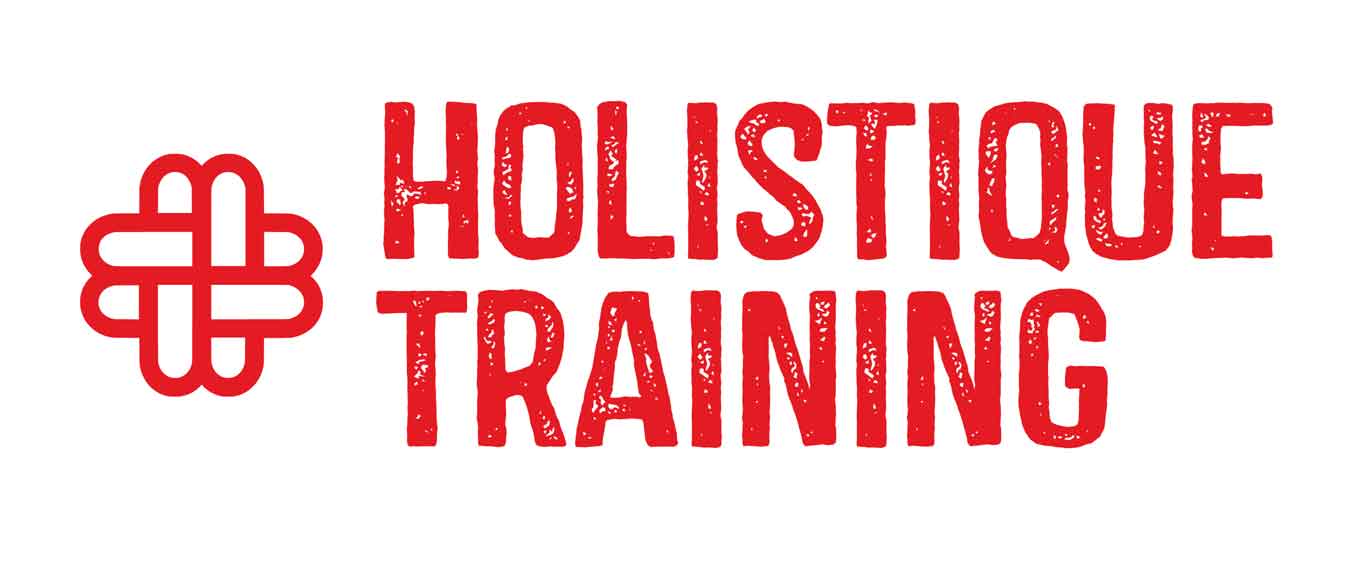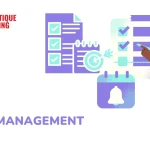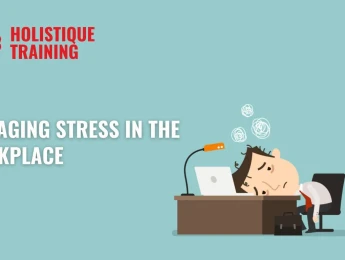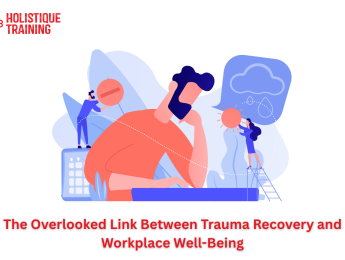- Table of Contents
- Introduction
- What is a Career Pivot?
- When Do You Need a Career Pivot?
- Stagnation in Growth
- Evolving Interests
- Burnout in Your Current Role
- Emerging Opportunities
- The Importance of a Career Pivot
- 1. Preserves and Leverages Your Expertise
- 2. Reduces Risk Compared to a Career Change
- 3. Adapts to Evolving Interests and Needs
- 4. Keeps You Engaged and Motivated
- 5. Enhances Career Longevity
- 6. Demonstrates Resilience and Adaptability
- 7. Opens Doors to New Opportunities
- Why a Career Pivot is an Investment in Yourself
- Career Pivot Strategy
- 1. Assess Your Skills, Strengths, and Interests
- 2. Identify Opportunities Within Your Industry
- 3. Upskill and Fill Knowledge Gaps
- 4. Leverage Your Network
- 5. Tailor Your Resume and Personal Brand
- 6. Start Small with Side Projects or Freelance Work
- 7. Be Patient and Persistent
- 8. Communicate Your Value During Interviews
- What is a Career Change?
- Tell-Tale Signs That You Need a Career Change
- 1- Lack of Passion
- 2- No Alignment with Long-Term Goals
- 3- Constant Stress or Unhappiness
- 4- Persistent Curiosity About Another Field
- 5- Limited Opportunities for Growth
- Career Change vs. Career Pivot: What’s the Difference?
- Which One is for You?
- Conclusion
Introduction
Navigating your career journey is rarely a straight line. It’s filled with twists, turns, and moments of reflection that force you to evaluate whether you’re on the right path. Sometimes, those moments lead to a realization: something needs to change. But what kind of change? Should you pivot within your current field or take the leap into an entirely new career?
This blog post dives deep into the concepts of career pivot and career change. We’ll explore what each entails, how to identify when they’re necessary, and provide actionable strategies to help you decide which path is right for you. By the end, you’ll have the clarity you need to make informed decisions about your professional future.
What is a Career Pivot?
A career pivot is a strategic shift within your existing field or industry. Think of it as a redirection rather than a complete restart. You’re not abandoning your current skills or experience; instead, you’re leveraging them in a slightly different way. It’s like adjusting the sails on a boat—your destination and purpose remain similar, but your approach changes.
For example, let’s say you’re a marketing professional specializing in social media. A career pivot might involve moving into content marketing, brand strategy, or even digital advertising. You’re still working within the marketing realm, but your focus shifts to a different niche or role.
Career pivots are often subtle. They don’t necessarily require going back to school or starting from scratch. Instead, they involve repositioning your existing expertise to fit a new role, team, or area of interest.
For Gen Z, who are known for their adaptability and openness to change, career pivots are becoming increasingly common. With 83% of Gen Z employees identifying as job hoppers according to Forbes and 4% planning to stay with their current employer for less than a year (while another 19% intend to stay no longer than a year), this generation is redefining workplace norms. Gen Z values flexibility, growth, and alignment with their personal goals, making career pivots a natural and strategic way for them to explore new opportunities while building on their existing skills.
When Do You Need a Career Pivot?
A career pivot usually comes into play when you feel stuck, unfulfilled, or underutilized in your current role, but you’re not ready to leave your industry altogether. Here are some common scenarios where a pivot might make sense:
Stagnation in Growth
If you’ve hit a ceiling in your current role and there’s little room for upward mobility, a pivot could help you explore new opportunities within your field. Maybe your current company doesn’t offer the leadership roles you’re aspiring to, or your job responsibilities have plateaued. A pivot allows you to seek challenges elsewhere without abandoning your expertise.
Evolving Interests
Over time, your interests may shift. You might find yourself gravitating toward a different aspect of your work. For instance, if you’re a software developer who’s become fascinated by user experience (UX) design, a pivot could help you transition into that space without leaving the tech industry.
Burnout in Your Current Role
Sometimes, burnout isn’t about the entire industry but rather the specific demands of your current role. If you’re feeling drained, a pivot can help you find a position that aligns better with your strengths and energy levels.
Emerging Opportunities
Industries evolve rapidly, and new roles emerge all the time. If you notice an exciting trend or niche within your field, a pivot could position you to take advantage of it. For instance, someone in traditional finance might pivot into fintech as technology reshapes the industry.
The Importance of a Career Pivot
A career pivot is more than just a professional adjustment—it’s a proactive step toward greater fulfillment, growth, and sustainability in your career. Here’s why it matters:
1. Preserves and Leverages Your Expertise
One of the greatest advantages of a career pivot is that it allows you to build on what you’ve already accomplished. Instead of discarding years of experience, you’re repurposing it to fit a new role or direction. This approach not only saves time but also positions you as a strong candidate in your new area because of your transferable skills.
For example, an HR professional who pivots into employee engagement consulting can use their deep understanding of workplace dynamics to address challenges in a new, more specialized way. By preserving their expertise, they remain credible and valuable while exploring a new career avenue.
This ability to leverage your existing knowledge and skills is a key reason why a pivot is often more practical and less risky than starting over with a complete career change.
2. Reduces Risk Compared to a Career Change
A career pivot is a strategic adjustment rather than a leap into the unknown. Because you’re staying within your industry or leveraging skills you already have, the transition tends to be smoother and less intimidating. This reduced risk makes a pivot an appealing option for professionals who want to make a change without sacrificing financial stability or professional momentum.
For instance, a teacher who pivots into curriculum development stays within the education sector but takes on a role that may have a better work-life balance or align more closely with their interests. This minimizes the uncertainty that often accompanies a full career change while still offering a fresh start.
3. Adapts to Evolving Interests and Needs
As you grow personally and professionally, your interests, priorities, and values may shift. A career pivot allows you to adapt to these changes without abandoning your career trajectory. It’s a way to recalibrate and ensure that your work remains meaningful and aligned with your current goals.
For example, someone who started their career in finance but has developed an interest in sustainability might pivot into green finance or corporate social responsibility. This shift allows them to merge their financial expertise with their passion for environmental issues, creating a career that feels both impactful and fulfilling.
4. Keeps You Engaged and Motivated
Few things are as demoralizing as feeling stuck in a job that no longer excites or challenges you. A career pivot can reignite your passion for your work by introducing new challenges, responsibilities, or areas of focus. This renewed sense of purpose can improve not only your professional performance but also your overall well-being.
For instance, a software engineer who pivots into a product management role might find new motivation in collaborating with cross-functional teams and shaping the vision for a product. This change adds variety and excitement to their work while keeping them engaged in their industry.
5. Enhances Career Longevity
In a rapidly changing job market, adaptability is key to staying relevant. A career pivot allows you to respond to shifts in your industry or job market without becoming obsolete. By continuously evolving and expanding your skill set, you position yourself as a versatile professional who can thrive in different roles and environments.
For example, a journalist who pivots into digital content strategy adapts to the decline of traditional print media while staying true to their passion for storytelling. This kind of forward-thinking pivot ensures that their career remains viable in the long term.
6. Demonstrates Resilience and Adaptability
Employers value professionals who can adapt to change and tackle new challenges. A career pivot showcases your ability to step out of your comfort zone, learn new skills, and embrace opportunities. This adaptability not only boosts your career prospects but also builds your confidence in navigating future transitions.
For example, a marketing professional who successfully pivots into data analytics demonstrates a willingness to learn and evolve with industry trends. This adaptability makes them a more attractive candidate for future roles and projects.
7. Opens Doors to New Opportunities
A pivot can expose you to opportunities you might never have encountered in your current role. By stepping into a new area within your field, you broaden your perspective, expand your network, and create pathways for further growth.
For instance, a public relations specialist who pivots into crisis communication might discover a passion for managing high-stakes situations. This new focus could lead to opportunities in consulting, leadership, or even entrepreneurship.
Why a Career Pivot is an Investment in Yourself
At its core, a career pivot is an investment in your personal and professional growth. It’s a way to take control of your career trajectory and ensure that your work aligns with your evolving goals and values. By proactively making adjustments, you prevent stagnation and stay ahead of the curve in an ever-changing job market.
A pivot isn’t just about solving immediate problems—it’s about positioning yourself for long-term success and fulfillment. It’s a chance to explore new possibilities, challenge yourself, and create a career that truly reflects who you are and where you want to go. Whether you’re seeking greater engagement, a better work-life balance, or opportunities for advancement, a career pivot can be the key to unlocking your full potential.
Career Pivot Strategy
Making a successful career pivot requires careful thought, planning, and execution. It’s not just about jumping into a new role or niche—it’s about strategically aligning your skills, interests, and goals with opportunities that will help you grow. A well-executed pivot can open doors to fresh challenges, renewed passion, and long-term career satisfaction. Here’s a step-by-step guide to crafting an effective career pivot strategy:
1. Assess Your Skills, Strengths, and Interests
The first step in any career pivot is self-assessment. Take the time to reflect on your professional journey so far. What are your core skills? Which aspects of your current role do you enjoy the most? What excites you about your industry, and what no longer serves you?
Create a list of your transferable skills—those that can be applied across different roles or areas within your field. For example, if you’re a project manager, your skills in organization, communication, and leadership are highly transferable to roles like operations management, product management, or even event planning.
Additionally, think about your personal interests and values. Are there areas of your industry that align more closely with your passions? For instance, if you work in finance but have a growing interest in technology, you might consider pivoting into fintech.
By understanding your strengths and what drives you, you’ll have a clearer picture of where to direct your pivot.
2. Identify Opportunities Within Your Industry
Once you’ve assessed your skills and interests, start researching roles or niches within your industry that align with them. Look for positions where your existing expertise can be leveraged while allowing you to explore new challenges.
For example, if you’re a graphic designer who wants to move into UX design, research roles like UX researcher or UX/UI designer. These positions overlap with your current skill set but require additional knowledge in user behavior and interface design.
To identify opportunities:
- Browse job boards and company career pages.
- Read industry blogs and reports to understand emerging trends.
- Talk to colleagues or mentors who can provide insights into potential roles.
- Attend webinars, conferences, or networking events to learn about new areas in your field.
The goal is to find a role that feels like a natural next step while still pushing you out of your comfort zone.
3. Upskill and Fill Knowledge Gaps
Most career pivots require learning new skills or deepening your expertise in certain areas. The good news is that you don’t always need to go back to school or pursue an expensive degree. There are plenty of accessible ways to upskill, including:
- Online Courses: Platforms like Holistique Training and LinkedIn Learning offer affordable courses on virtually any topic.
- Certifications: Industry-recognized certifications can help you build credibility in your new area. For example, a marketer transitioning into data analytics might pursue a Google Analytics certification.
- Workshops and Bootcamps: Short-term, intensive programs can provide hands-on experience and practical knowledge in a specific area.
- On-the-Job Learning: If possible, take on responsibilities in your current role that align with your desired pivot. For instance, if you’re interested in moving into leadership, volunteer to manage a small team or lead a project.
- When upskilling, focus on the specific skills and tools required for your target role. This ensures that your efforts are efficient and directly applicable.
4. Leverage Your Network
Networking is a critical component of any career pivot. Your professional connections can provide valuable insights, advice, and even job opportunities in your desired area. Start by reaching out to people in your network who have experience in the field or role you’re targeting. Ask for informational interviews to learn about their career paths, challenges, and recommendations.
Additionally:
- Join Industry Groups: Participate in professional organizations, LinkedIn groups, or local meetups related to your target area.
- Attend Events: Conferences, webinars, and workshops are great places to meet like-minded professionals and potential mentors.
- Reconnect with Colleagues: Former coworkers or managers may have connections or advice that can help you in your pivot.
Networking not only helps you gather valuable information but also increases your visibility in your desired field. The more people who know about your pivot, the more likely you are to uncover opportunities.
5. Tailor Your Resume and Personal Brand
When making a pivot, it’s essential to reframe your experience in a way that aligns with your new direction. Start by updating your resume, LinkedIn profile, and other professional materials to highlight your transferable skills and relevant accomplishments.
Here’s how to tailor your personal brand:
- Focus on Transferable Skills: Emphasize the skills that are most applicable to your target role. For example, if you’re a teacher pivoting into corporate training, highlight your communication, curriculum development, and presentation skills.
- Reframe Your Experience: Use language that resonates with your new field. For instance, a journalist moving into content marketing might describe their experience as “creating data-driven content strategies” rather than “writing news articles.”
- Showcase Your New Skills: Include any certifications, courses, or projects that demonstrate your commitment to your pivot.
Additionally, consider creating a portfolio or personal website to showcase your work and expertise. This is especially useful if you’re pivoting into a creative or technical field.
6. Start Small with Side Projects or Freelance Work
If you’re unsure about fully committing to a pivot, consider testing the waters with side projects, freelance work, or volunteer opportunities. This allows you to gain hands-on experience in your new area without leaving your current job.
For example:
- A marketing professional interested in event planning could volunteer to organize events for a local nonprofit.
- A software developer curious about product management might take on a small project to collaborate with a product team.
These experiences not only help you build relevant skills but also provide tangible examples to showcase during interviews.
7. Be Patient and Persistent
A career pivot is a process, not an overnight transformation. It may take time to acquire new skills, build connections, and land your desired role. During this period, it’s important to stay focused, motivated, and open to feedback.
There may be setbacks along the way, such as rejections or roles that don’t quite fit. Treat these as learning opportunities and refine your strategy as needed. Remember, every step you take—whether it’s completing a course, attending a networking event, or updating your resume—brings you closer to your goal.
8. Communicate Your Value During Interviews
When you start applying for roles, be prepared to explain your pivot in a way that highlights your strengths. Employers may ask why you’re transitioning, so it’s important to have a clear and confident narrative.
Focus on:
- Your Motivation: Explain why you’re passionate about this new direction and how it aligns with your long-term goals.
- Your Transferable Skills: Emphasize how your existing experience makes you uniquely qualified for the role.
- Your Commitment: Showcase the steps you’ve taken to prepare for this pivot, such as upskilling or gaining relevant experience.
For example, if you’re a customer service professional pivoting into sales, you might say: “Over the years, I’ve developed a deep understanding of customer needs and relationship-building through my work in customer service. I’m excited to apply these skills in a sales role, where I can help clients find solutions while driving business growth.”
Table: Metrics to measure the effectiveness of a career pivot strategy
Metric | Description |
Job Satisfaction | Measures happiness and fulfillment in the new role |
Skill Utilization | Evaluates how effectively existing and new skills are applied |
Career Growth Opportunities | Tracks potential for promotions, learning, or advancement |
Income Stability or Growth | Assesses financial consistency or improvement after the pivot |
Work-Life Balance | Determines how well the role supports personal and professional balance |
What is a Career Change?
A career change, on the other hand, is a complete shift into a new industry or field. It’s not about tweaking your current path—it’s about starting fresh. A career change often involves acquiring entirely new skills, credentials, or experiences to succeed in a different profession. For example, transitioning from teaching to software engineering would be a career change. It requires a significant investment of time and effort to build the knowledge and qualifications needed for success. Career changes are bold moves, often stemming from a deep dissatisfaction with your current field or a strong desire to pursue a passion or interest that’s entirely unrelated to your previous work. With the average person changing careers 5 to 7 times during their working life, and approximately30% of the workforce switching jobs annually, it’s clear that career transitions are becoming a common and necessary step for many professionals seeking fulfillment and growth.
Tell-Tale Signs That You Need a Career Change
While a career pivot can address dissatisfaction within your current field, there are times when a more drastic change is necessary. Here are some signs that it might be time for a career change:
1- Lack of Passion
If you dread going to work every day and feel no connection to your job, it might be time to explore a new field that aligns with your values and interests.
2- No Alignment with Long-Term Goals
If your current career doesn’t support your vision for the future, a change might be necessary to get you back on track.
3- Constant Stress or Unhappiness
When your job negatively impacts your mental health, it’s a clear sign that something needs to change. If no role within your current field feels like a good fit, it might be time to look elsewhere.
4- Persistent Curiosity About Another Field
If you find yourself constantly drawn to a different industry or profession, it’s worth exploring whether a career change could fulfill that curiosity.
5- Limited Opportunities for Growth
If your field offers no room for advancement or innovation, a career change could open doors to new possibilities.
Career Change vs. Career Pivot: What’s the Difference?
The primary difference between a career pivot and a career change lies in the scope of the transition. A pivot is a shift within your current field, while a change involves moving to an entirely new industry. Here’s a quick comparison:
Aspect | Career Pivot | Career Change |
Scope | Adjusting within your field | Moving to a new field entirely |
Risk | Lower | Higher |
Skill Transferability | High | Varies |
Time Investment | Moderate | Significant |
Motivation | Evolving interests | Deep dissatisfaction |
Which One is for You?
Deciding between a career pivot and a career change depends on your unique situation, goals, and level of dissatisfaction. Here are some questions to ask yourself:
What’s Driving My Desire for Change?
If you’re bored or burned out in your current role but still enjoy the industry, a pivot might be the answer. If you feel completely disconnected from your field, a change may be necessary.
What Are My Long-Term Goals?
Consider where you want to be in five or ten years. Does your current industry offer a path to those goals? If not, a career change could be the solution.
How Much Risk Am I Willing to Take?
A pivot is generally less risky than a full career change. If you’re not in a position to take on significant financial or professional uncertainty, a pivot might be the safer option.
Am I Willing to Invest in New Skills?
A career change often requires extensive upskilling or retraining. If you’re not ready for that commitment, a pivot may be a better fit.
Conclusion
Whether you choose a career pivot or a career change, the key is to approach the decision with intention and clarity. Both paths offer opportunities for growth and fulfillment, but they require different levels of risk, effort, and planning.
A career pivot allows you to realign your work with your evolving interests and goals while building on your existing experience. It’s a subtle yet impactful way to reignite your passion for your career. A career change, on the other hand, is a bold leap into the unknown. It’s a chance to start fresh and pursue a path that truly resonates with you.
Ultimately, the choice between a pivot and a change depends on your unique circumstances, aspirations, and willingness to embrace transformation. Whichever path you choose, remember that your career is a journey, not a destination. Embrace the process, trust your instincts, and take the steps necessary to create a fulfilling and meaningful professional life.
























